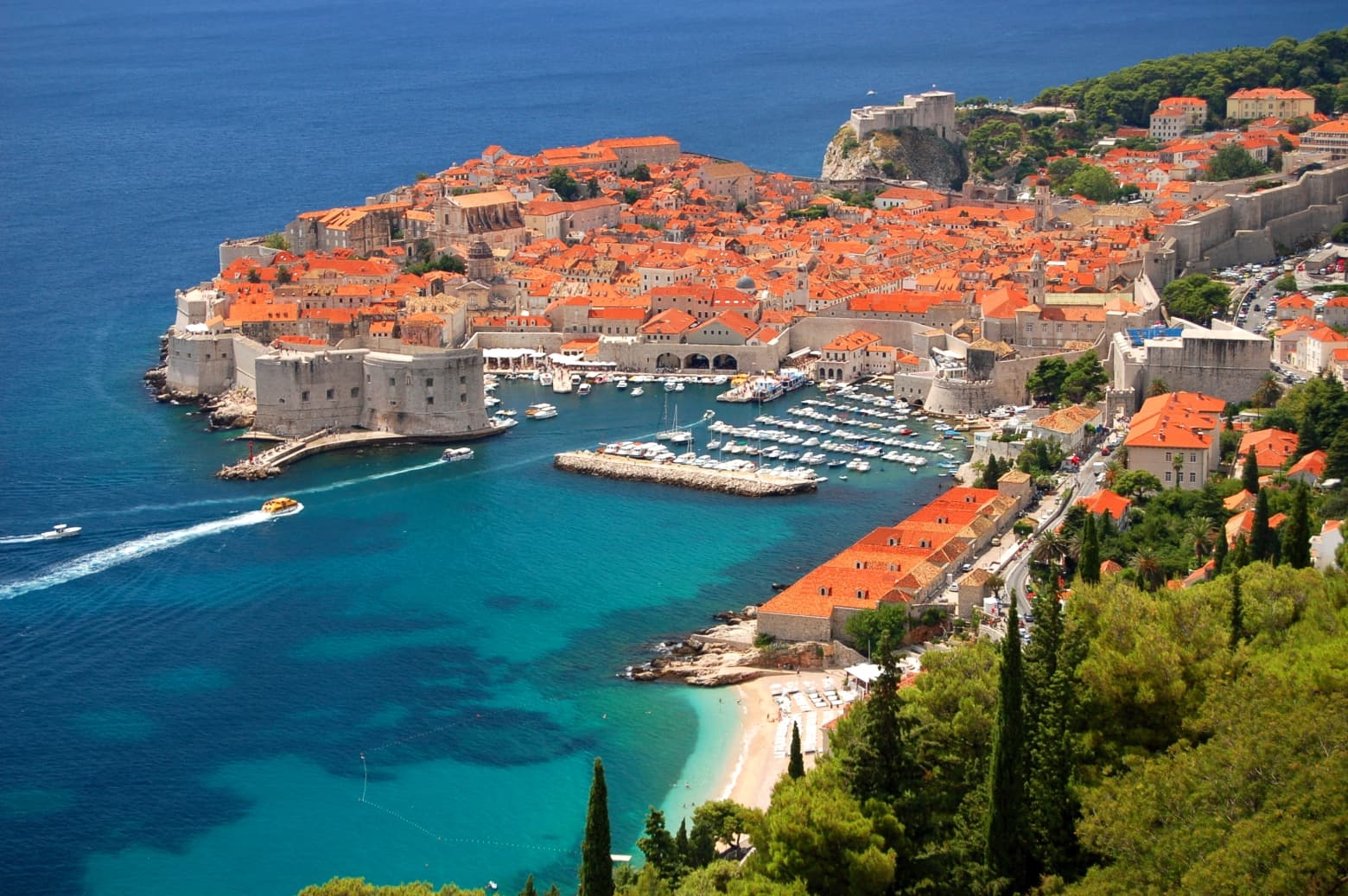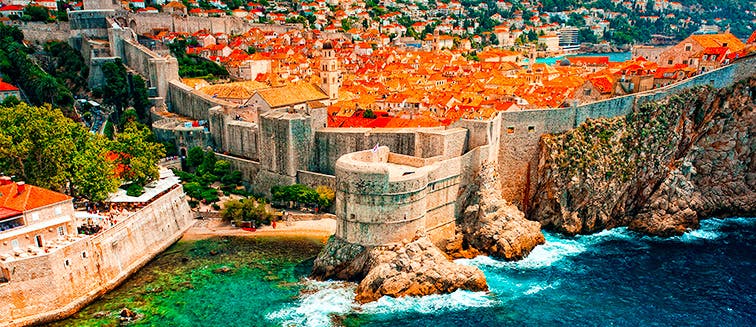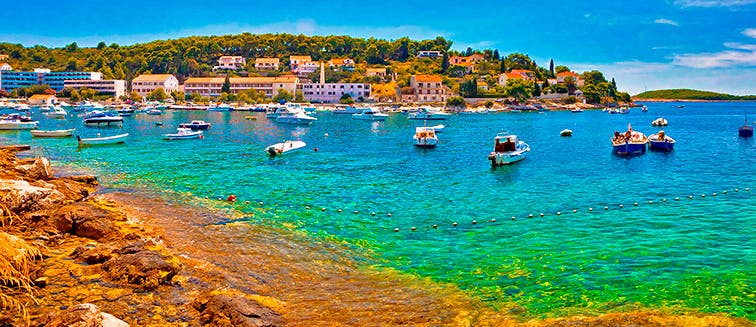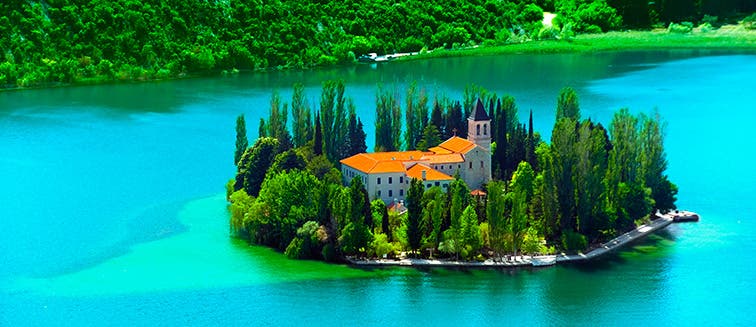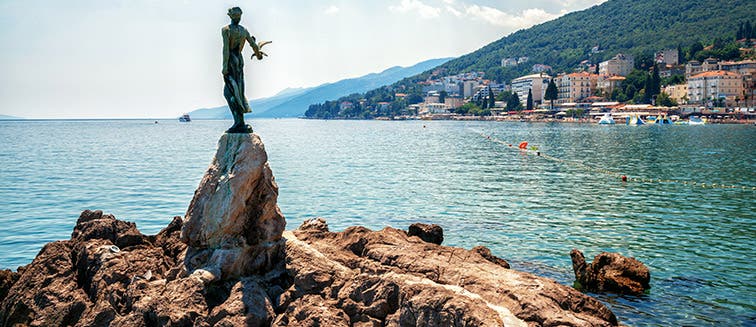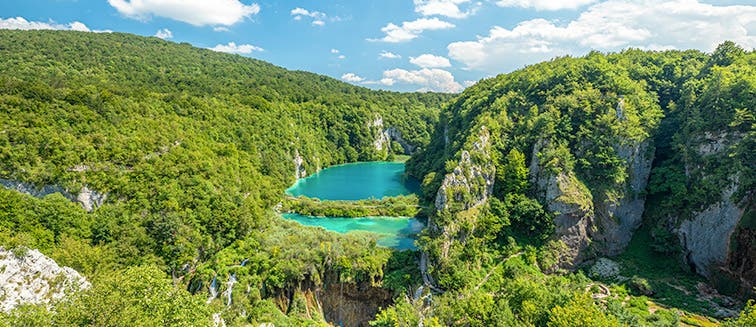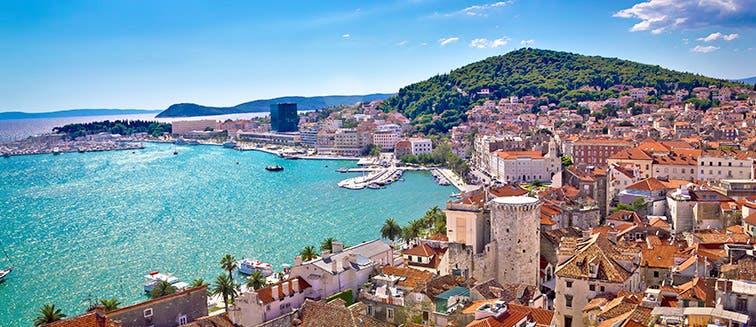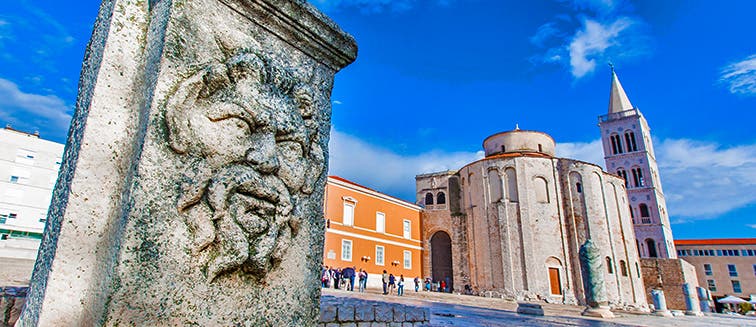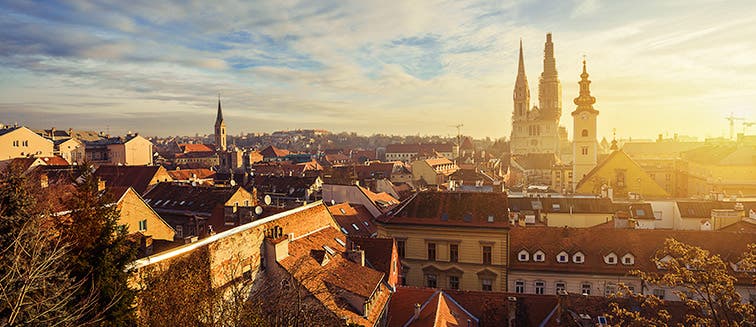Stretched out along the sparkling waters of the Adriatic Sea, Croatia is adored for its gorgeous beaches, breathtaking national parks and famous historic landmarks, such as Dubrovnik’s dreamy old town, famously immortalised in the TV series Game of Thrones. Zagreb, the capital, is also home to a number of historic sights, ranging from regal mansions to ornate churches and impressive galleries and it’s known for its vibrant city culture, although it’s the Dalmatian coast and its many islands which holiday-makers fall for; white sand coves, clear waters and limestone cliffs make this region a must-visit on a tour of Croatia.
At the crossroads of Southern and Central Europe, Croatia has its own distinct culture. Emerging from Yugoslavia in 1991, it has remained an off-radar travel destination until relatively recently. From the bucket-list-worthy Plitvice Lakes National Park, a magical world of waterfalls and lakes, to the beach-side paradise of Split and the atmospheric walled-city of Dubrovnik, Croatia packs a punch whether you’re longing for a laid-back beach break or an action-packed sightseeing tour. A holiday to Croatia opens up a smorgasbord of heritage sites, such as Zagreb’s Austro-Hungarian elegance and the Roman splendour of Pula. Diverse, dazzlingly beautiful and delightfully affordable, a trip to Croatia should be on your travel list!
History of Croatia
Croatia has a complex history, having come under the influence of many different empires and kingdoms across the centuries. Its rich historical legacy is kept alive today in its great number of UNESCO World Heritage Sites and ancient monuments, which are popular highlights on a tour of Croatia. In antiquity, Croatia’s coastline was inhabited by Greek colonies, notably on the islands of Vis and Hvar, before it became incorporated into the Roman Empire. Relics such as the magical Diocletian’s Palace in Split, a highlight of any trip to Croatia, pay testament to this period in the nation’s history. Croats, a Slavic people, arrived in the 7th-century, expanding inland from Dalmatia and establishing two separate Croatian states, Pannonia and Croatia.
In 925 these two duchies united to form the Kingdom of Croatia, under their first leader, King Tomislav. This newly founded kingdom entered a union with the neighbouring Kingdom of Hungary in the 12th-century, adopting many aspects of Hungarian culture and feudalism. The Middle Ages were characterised by struggles for control over the Adriatic with the Republic of Venice across the sea, and increasing threats to the sovereignty of the kingdom from the ever-growing Ottoman Empire. By the 16th-century the Ottomans controlled much of Croatia and retained their power in the region until their defeat in the Battle of Petrovaradin in 1716.
Following World War I, Croatia was merged into the Kingdom of Yugoslavia. During World War II the nation, occupied by the Axis powers, became a Nazi-backed puppet-state. This was a dark time in Croatia’s history as many racial laws were enacted, in line with those in place in fascist Germany. A strong resistance movement soon emerged, leading to the creation of the Federal State of Croatia, although, post-war Croatia, once again, became part of Yugoslavia. It was not until 1991 that this proud nation gained independence. Since then, its appeal as a travel destination has widened and today a trip to Croatia is on the lists of all who wish to experience the rich historical heritage of this diverse nation.
Nature in Croatia
Croatia is well-known for its staggering natural beauty. Home to national parks cited as ‘the most beautiful in the world’, and beaches so pristine that they wouldn’t look out of place in a brochure for a far-flung tropical escape, Croatia has an unforgettable natural surprise around every corner. Forested karsts, tiny Dalmatian islands and brightly coloured lakes in a diverse palette of blues and greens are just some of the delights to explore on a trip to Croatia. One of the most biodiverse countries in Europe, there’s a number of top natural attractions to discover if you travel to Croatia. Plitvice Lakes National Park tops the list thanks to its spellbinding landscapes of waterfalls, canyons, turquoise lakes and lush forests.
Just a couple of hours outside of the capital of Zagreb, wooden walkways and hiking trails allow those who visit Plitvice to get in touch with unbounded nature in all its many forms. Mljet, Croatia’s southernmost island, is known for its great diving, pine forest-covered interior and sandy shoreline, making it one of Croatia’s best-kept secrets and another must-visit highlight. For the more adventurous, a trip to Croatia is incomplete without exploring some of its subterranean worlds. The caves of Paklenica National Park are brimming with bats, stalagmites and stalactites, the most famous being Manita Pec Cave. The national park is also great for nature lovers who can spot eagles, deers and even bears within its boundaries. Whether you’re into island-hopping, mountain hiking or nature trailing, Croatia’s natural beauty is unforgettable.
Culture in Croatia
Owing to its position on the crossroads between southern and central Europe, Croatia may offer familiar Mediterranean climes but its culture is distinctively unique. The official language of Croatian replaced Latin in the 19th-century and after centuries of fighting for the recognition of their own identity, Croatians are rightly proud of their country and culture. You’re likely to notice the prolific red and white checkerboard motif of the national flag during a holiday to Croatia, which adorns buildings and locals alike.
Regional diversity is another feature of Croatian culture. The people of Slavonia in the interior and the coastal Dalmatians are both proudly Croatian but have differences in traditions and culture, which makes getting to know the country even more fascinating. Croatia is a land of unique traditions and customs; from Dubrovnik’s rambunctious Feast of Saint Blaise celebrations to the ancient art of sword dancing on the Korcula islands, Croatia is scattered with curiosities and unique relics of its colourful past.
Travel to Croatia, where beach paradise meets cultural melting-pot. Discover Roman ruins, eat Mediterranean delicacies and explore medieval cities on a tour of Croatia, the pearl of the Adriatic.
